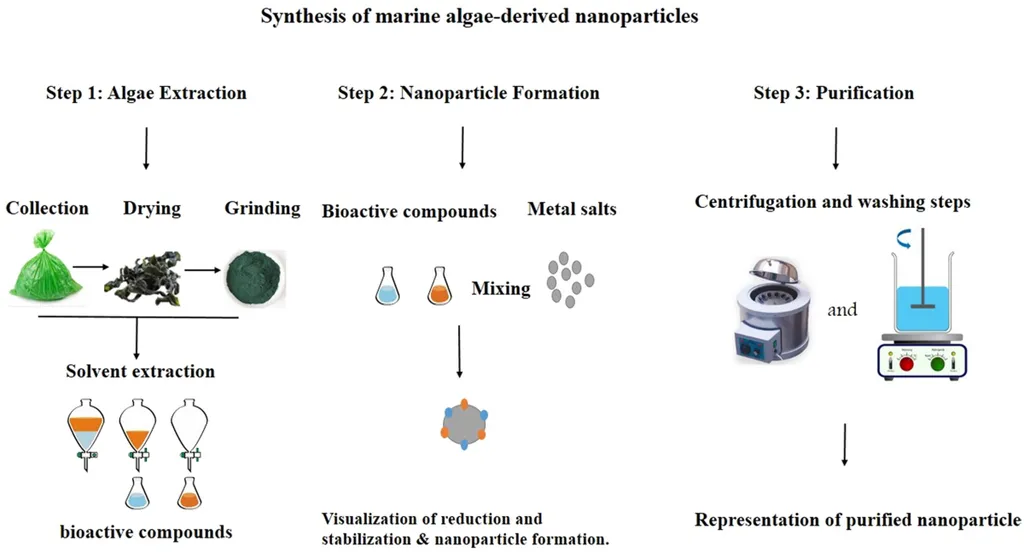In a breakthrough that could revolutionize biomedical applications, researchers have successfully synthesized bimetal Mg-Y doped ZnO nanorods using a green method involving the extract of Sargassum siliquosum, a type of brown seaweed. This innovative approach, detailed in a recent study published in the South African Journal of Chemical Engineering (translated as “Suid-Afrikaanse Tydskrif vir Chemiese Ingenieurswese”), opens up new avenues for the maritime and biomedical sectors.
At the helm of this research is Yetria Rilda from the Department of Chemistry at Andalas University in Indonesia. Rilda and her team have demonstrated that the amino-cellulose compounds found in Sargassum siliquosum can act as stabilizing agents and growth controllers for metal precursor ions. This green synthesis method is not only eco-friendly but also highly effective in enhancing the multifunctional biomedical performance of ZnO.
The study focuses on improving the antibacterial, antioxidant, anti-inflammatory, and antidiabetic properties of ZnO through bimetal ion doping with Magnesium (Mg2+) and Yttrium (Y3+). The results are promising, with the doped samples exhibiting strong antibacterial activity and significant biomedical performance. “The 0.03 M Mg-Y/ZnO sample exhibits the highest biomedical performance, with significant antioxidant, anti-inflammatory, and antidiabetic activities,” Rilda noted.
For the maritime sector, this research presents a unique opportunity. The use of Sargassum siliquosum, a common seaweed, could lead to the development of sustainable and cost-effective biomedical materials. This could be particularly beneficial for coastal communities and maritime industries, where access to advanced medical treatments is often limited.
Moreover, the green synthesis method employed in this study aligns with the growing global emphasis on sustainability and eco-friendly practices. As Rilda explains, “The macroalga Sargassum siliquosum contains amino-cellulose bioactive compounds that act as stabilizing agents and growth controllers for metal precursor ions in the synthesis of Mg-Y/ZnO nanorods.” This approach not only reduces the environmental impact but also enhances the functionality of the final product.
The commercial implications are substantial. The enhanced biomedical properties of the doped ZnO nanorods could lead to the development of new medical treatments and products. This could open up new markets and revenue streams for maritime industries, particularly those involved in the production and processing of seaweed.
In conclusion, this research highlights the potential of green synthesis methods and the use of marine resources in the development of advanced biomedical materials. As the world continues to grapple with environmental challenges and healthcare needs, such innovations offer a glimmer of hope and a path towards a more sustainable and healthier future.

